SUMMER Nights, Jul 8 – Aug 12, 2022
Past: 60 Lispenard St
Installation view, SUMMER Nights, Canada, New York, 2022

Installation view, SUMMER Nights, Canada, New York, 2022

Installation view, SUMMER Nights, Canada, New York, 2022

Installation view, SUMMER Nights, Canada, New York, 2022

Installation view, SUMMER Nights, Canada, New York, 2022

Installation view, SUMMER Nights, Canada, New York, 2022

Installation view, SUMMER Nights, Canada, New York, 2022

Installation view, SUMMER Nights, Canada, New York, 2022

Artworks

Rachel Eulena Williams,
Clouded Rain Watching,
2021,
60 ½ × 50 ¾ × 4 in (153.67 × 128.905 × 10.16 cm)
Acrylic paint, dye, polyvinyl fabric, and photographs on canvas, wood and cotton rope, over wood panel
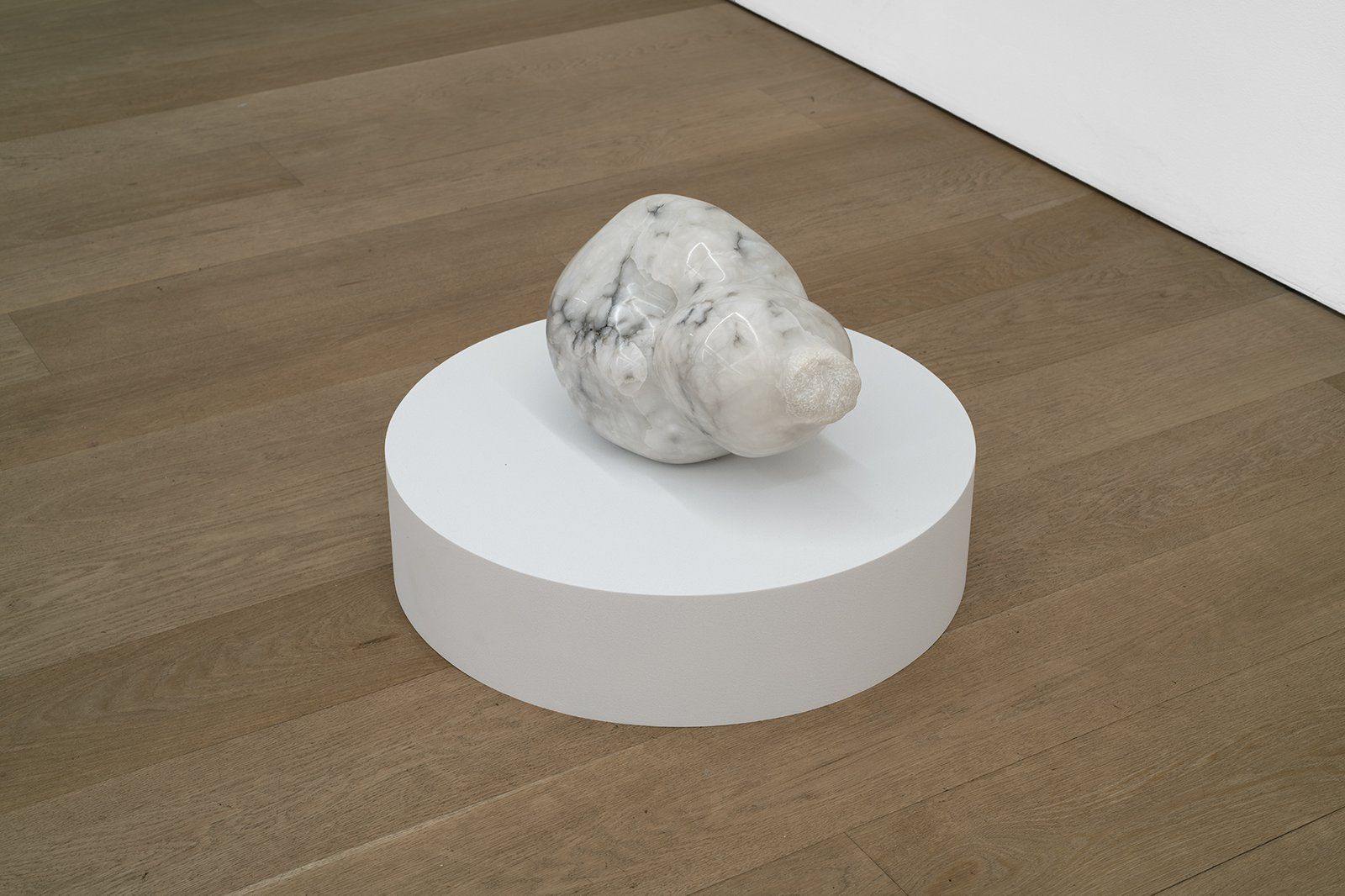
Addoley Dzegede,
Strange Fruit,
2003,
10 ½ × 17 × 10 ½ in (26.67 × 43.18 × 26.67 cm)
Alabaster
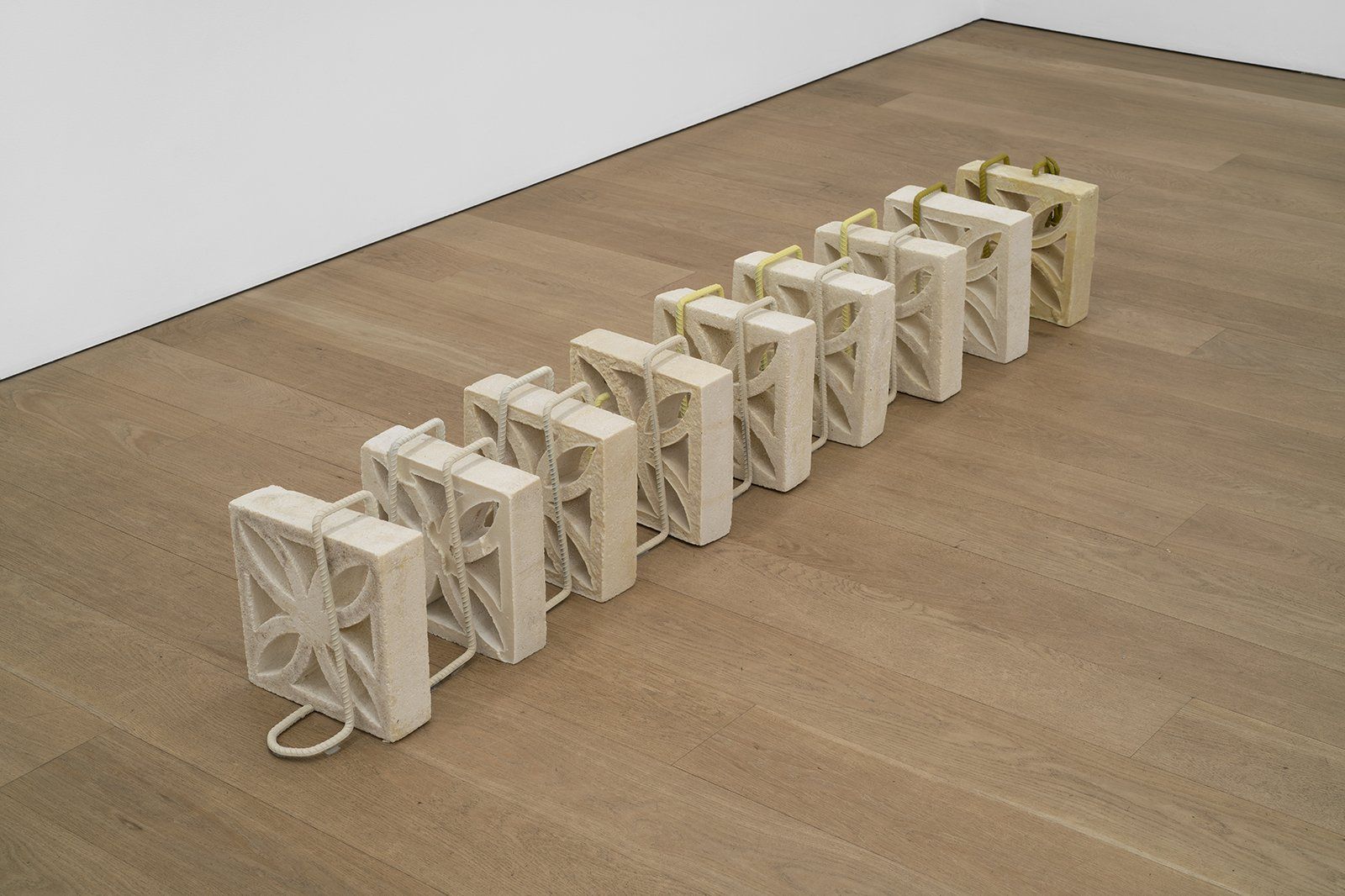
Abigail Lucien,
still,
2021,
12 × 84 × 12 in (30.48 × 213.36 × 30.48 cm)
Cocoa butter, chicken feet, acrylic and vinyl on steel

Sam Vernon,
Vacant Lots,
2015 - 2022, 22 × 30 in (55.88 × 76.2 cm)
Monotype and graphite on archival paper

Sam Vernon,
I Bought a Lawnmower,
2015 - 2022,
22 × 30 in (55.88 × 76.2 cm)
Monotype and graphite on archival paper

Addoley Dzegede,
Richard,
2021,
28 ½ × 21 ¾ in (72.39 × 55.245 cm)
Reactive dye on cotton

Carly Mandel,
Walgreens Medical ID,
2021,
12 × 42 × 42 in (30.48 × 106.68 × 106.68 cm)
Glass, concrete, ceramic, plastic, steel
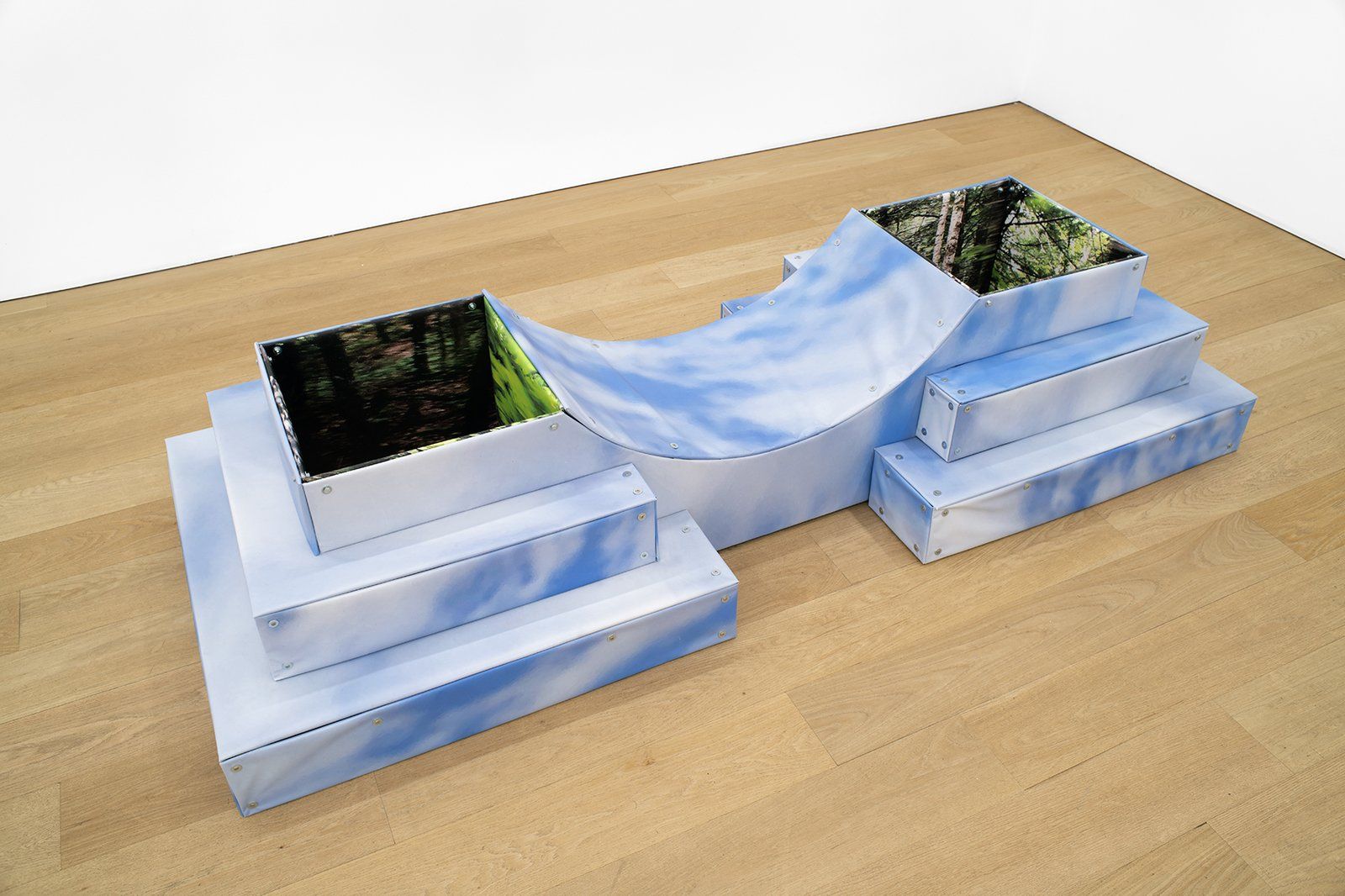
Gi (Ginny) Huo,
Celestial Bodies I,
2020,
42 × 100 × 20 in (106.68 × 254 × 50.8 cm)
Wood, vinyl, mirror
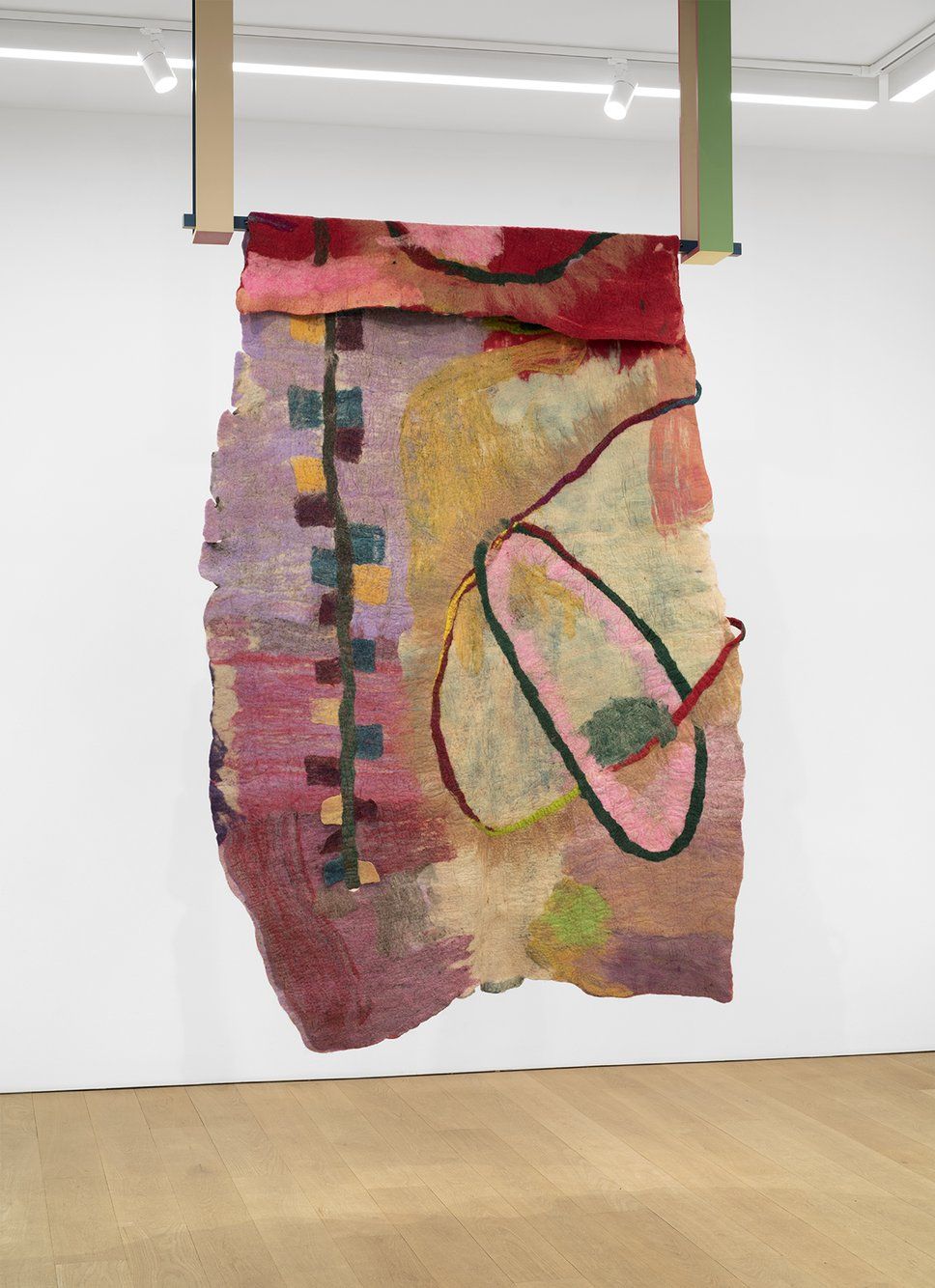
Kristine Woods,
Reach Around,
2022,
144 × 120 × 10 in (365.76 × 304.8 × 25.4 cm)
Hand-felted dyed wool, painted wood

Fin Simonetti,
Gusset 4,
2020,
18 × 36 × 6 in (45.72 × 91.44 × 15.24 cm)
Stained glass

Julia Haft-Candell,
Expanding Teal,
2020,
12 ½ × 13 ¾ × 11 in (31.75 × 34.925 × 27.94 cm)
Ceramic

Lee Relvas,
Untitled,
2022,
64 × 42 × 22 in (162.56 × 106.68 × 55.88 cm)
Plywood, window screen mesh, rubber bands, rubber spline, epoxy putty, polyurethane

Lee Relvas,
Untitled,
2022,
64 × 28 × 14 in (162.56 × 71.12 × 35.56 cm)
Plywood, window screen mesh, rubber bands, rubber spline, epoxy putty, polyurethane

Lee Mary Manning,
Isness,
2021,
20 ¼ × 16 ¼ × 1 ½ in (51.435 × 41.275 × 3.81 cm)
C-prints on matboard

Beverly Semmes,
Leaf Lovers Monthly,
2007–2011, 84 ½ × 126 × 19 in (214.63 × 320.04 × 48.26 cm)
Crushed velvet

Hanae Utamura,
Inverted Horizon (Fire) Minamisanriku, Miyagi Prefecture, Japan,
2011–2021, 24 ⅜ × 32 ½ in (61.9125 × 82.55 cm)
Archival pigment print on Hahnemühle Fine Art Baryta, Maple wood frame

Hanae Utamura,
Inverted Horizon (Ground Zero) Rikuzentakata, Iwate Prefecture, Japan,
2011–2021, 24 ⅜ × 32 ¼ in (61.9125 × 81.915 cm)
Archival pigment print on Hahnemühle Fine Art Baryta, Maple wood frame

Inverted Horizon (Mother) Natori, Miyagi Prefecture, Japan,
2011–2021, 24 ⅜ × 32 ¼ in (61.9125 × 81.915 cm)
Archival pigment print on Hahnemühle Fine Art Baryta, Maple wood frame
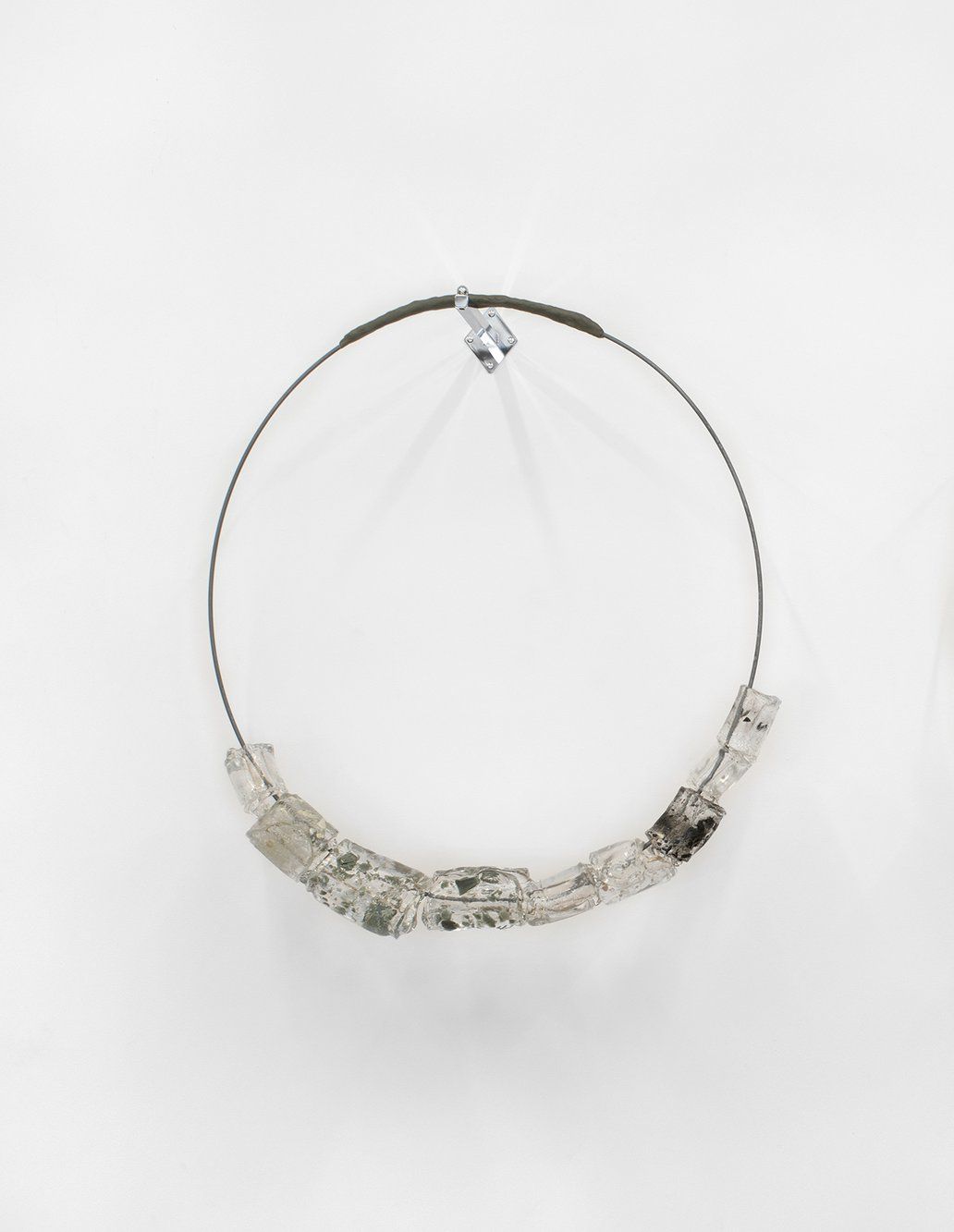
Carly Mandel,
ID bracelet QTY 1,
2021,
36 × 36 × 5 in (91.44 × 91.44 × 12.7 cm)
Glass, ceramic, steel

Carly Mandel,
ID bracelet QTY 1,
2021,
36 × 36 × 5 in (91.44 × 91.44 × 12.7 cm)
Glass, ceramic, steel
Press Release
Canada is pleased to announce SUMMER Nights, a group exhibition featuring work by Addoley Dzegede, Julia Haft-Candell, Gi (Ginny) Huo, Abigail Lucien, Carly Mandel, Mary Manning, Lee Relvas, Beverly Semmes, Fin Simonetti, Hanae Utamura, Sam Vernon, Rachel Eulena Williams, and Kristine Woods.
SUMMER Nights is an installation of sculpture and objects that oscillate between various fragments of architecture. Using a wide array of mediums, each artist evokes memories relating to world-building, architecture, family, belonging, and to the abstraction of living today.
Abigail Lucien, Gi (Ginny) Huo, Mary Manning, Rachel Eulena Williams, and Hanae Utamura present architectural abstraction in sculpture, photography, and painting in distinct and complicated ways. Lucien and Huo recall fictional world building but also point to the loss and destruction of contemporary landscapes. Lucien looks at ways in which cultural identities and inherited colonial structures in the Caribbean transmit to the body and psyche by playfully challenging systems of assimilation through materials. Huo builds worlds and topographies that appear to fold into themselves. Drawing upon their conservative Mormon upbringing, Huo explores the intentions of what people believe and the legacies of religious systems by recreating sculptural landscapes to navigate questions of belief by creating alternative portals to peculiar spaces. Utamura triptych documents the 2011 earthquake and tsunami in Japan. The natural occurrence changed the course of lived experiences of a space, forcing residents to adjust or redesign their daily lives. With these tense photographs, the artist is making a record of the loss and the abstraction of space on a larger scale. Rachel Eulena Williams’ painted constructions employ the language of abstract painting, but are transformed through her own approach to material. Finding a balance between painting and sculpture, Williams applies large swaths of color made from painted canvases that she subsequently cuts up and reconfigures. The collage-like quality is tied together with sewing which acts both functionally and creates marks inside her compositions. Williams also adds ropes of differing sizes and thickness that become stand-ins for gestural marks. The overall feeling is of solidity and lightness, structure and wild chances, jostling to create waves of energy. Mary Manning models a method of close looking in carefully arranged juxtapositions of 35mm analog prints. Taking familiar objects and scenes as their subject matter, Manning’s photos picture people, nature, the street, and everything in between. Conceptualizing “paying attention as a practice of being alive,” the artist insists on the importance and meaning of quiet moments and humdrum things.
Beverly Semmes, Carly Mandel, and Kristine Woods explore variations in scale, form, and detail in the human body and comment on ways in which technologies are employed to adorn us and how we see ourselves and our bodies reflected. In a large-scale wall sculpture, Semmes uses large bolts of green fabric to make unwearable garments that are ghosts of consumerism and expectations. By contrast, Mandel presents two glass, ceramic, and steel works, differing in scale but similar in execution and materiality, that probe the artist's interests in how late-stage Capitalism enacts violence on the body and memory. Mandel contrasts material that she can handle and form with those she cannot: hypercommercial machine made objects. Woods’ large hand-felted wool and wood wall sculpture is materially at odds with itself, labile and flexible. In this regard it is a tool, referencing the historical practice of felting, but also the blending colors to create an ethereal experience, mimicking our digital and mechanical landscapes that are becoming blurred. As technology mixes into our lives, we might become bionic without the memory of what life was like before. Semmes, Mandel, and Woods recall a past that we are living now.
Addoley Dzegede uses home, familial references, and cultural iconography to create dialogue between material, meaning and metaphor, inquiring into who we are and how we got here. Fin Simonetti’s stained glass bear trap could trap a person but could be seen also as a non-functional, ornate tool of terror and a surprise hiding in plain sight. Lee Relvas presents new, plywood flower sculptures that appear as a singular line of defined form. Sam Vernon’s three monochromatic works on paper, part of a larger series, utilize several gestures in one piece. Similarly, Julia Haft-Candell’s sculptures utilize gesture as a way to capture form within ceramic, a material that was once soft and malleable but is now fired into a frozen state, brimming with energy.
Kahlil Robert Irving has curated a coinciding show at Klaus von Nichtssagend Gallery called Summer DAYZ on view through July 29.